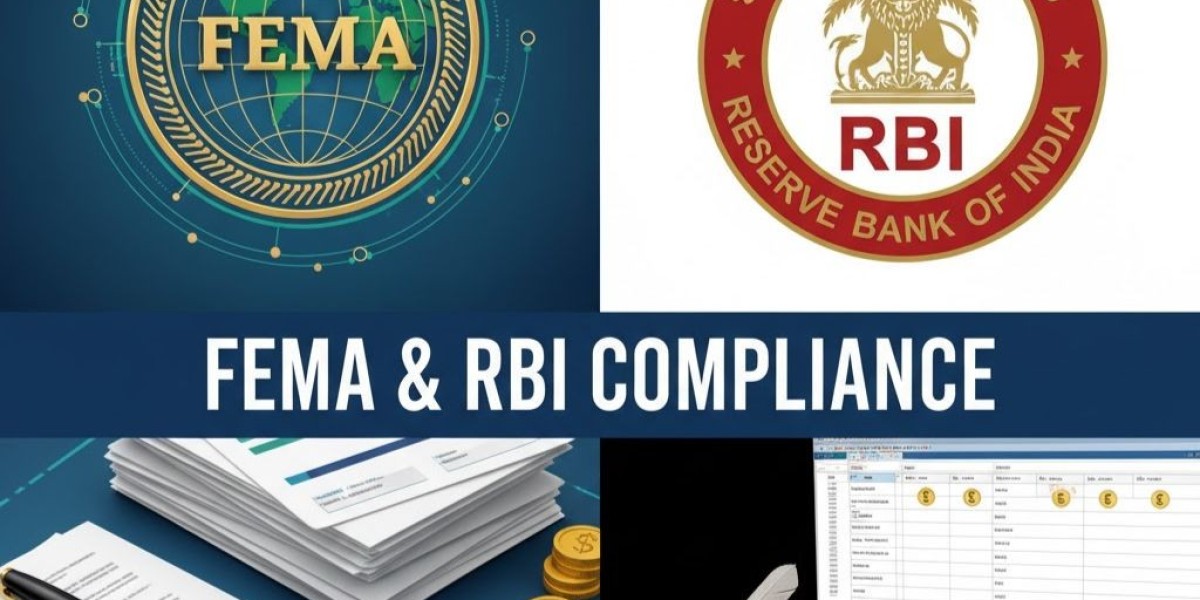Foreign investment plays a pivotal role in India’s economic growth and globalization efforts. The Reserve Bank of India (RBI), as the central authority regulating foreign exchange transactions, ensures that all investments comply with the Foreign Exchange Management Act (FEMA) and related regulations. Businesses receiving foreign investments must follow a defined set of procedures known as RBI compliance for foreign investment. This ensures transparency, legal adherence, and smooth facilitation of cross-border capital flows.
In this detailed guide, R Pareva & Company explains the step-by-step process for RBI compliance for foreign investment, along with essential insights into FEMA and RBI Compliance in India.
1. Understanding FEMA and RBI Compliance
Before diving into the process, it’s essential to understand what FEMA and RBI Compliance entails.
The Foreign Exchange Management Act (FEMA), 1999 governs all foreign exchange transactions in India, including capital inflows and outflows. The RBI, as the regulator, oversees the implementation of FEMA provisions to maintain orderly foreign exchange operations and promote balanced economic development.
FEMA and RBI Compliance in India primarily ensures that all transactions involving foreign currency or foreign investors are legally structured and appropriately reported to the RBI. Non-compliance can result in severe penalties, including reversal of transactions, fines, or restrictions on future foreign investments.
2. Types of Foreign Investment in India
RBI classifies foreign investments into two broad categories:
Foreign Direct Investment (FDI) – When a foreign entity invests in equity shares of an Indian company to gain significant control or management participation.
Foreign Portfolio Investment (FPI) – When foreign investors purchase shares or debentures without gaining controlling interest.
Both types require RBI compliance for foreign investment, though the procedural requirements differ.
3. Step-by-Step Process for RBI Compliance for Foreign Investment
Step 1: Identify the Nature of Investment
The first step is to determine the type of investment — FDI or FPI — and the applicable sectoral caps. The government of India has outlined specific limits for foreign investment in various sectors such as telecom, defense, retail, and insurance.
Step 2: Check the Entry Route
Foreign investment in India can be made through two routes:
Automatic Route: No prior approval from the RBI or government is required.
Government Route: Prior approval is mandatory for certain sectors.
Companies must determine under which route their investment falls before proceeding with the transaction.
Step 3: Valuation of Shares
As per FEMA regulations, the valuation of shares should be conducted by a SEBI-registered Merchant Banker or a Chartered Accountant (CA) using internationally accepted pricing methodologies. This ensures transparency in the pricing of shares offered to foreign investors.
Step 4: Receipt of Funds
Once the foreign investor remits the funds, the amount must be received through proper banking channels. The Indian company must issue a Foreign Inward Remittance Certificate (FIRC) from the authorized dealer bank as proof of receipt.
Step 5: Allotment of Shares
After receiving funds, the company must allot shares to the foreign investor within 60 days. If the shares are not allotted within this period, the funds must be refunded to the investor within 15 days.
Step 6: Filing of Form FC-GPR
Within 30 days of issuing shares to a foreign investor, the company must file Form FC-GPR (Foreign Currency – Gross Provisional Return) on the RBI’s FIRMS portal. The following documents are required:
Board resolution for allotment of shares
KYC report of the foreign investor
Valuation certificate from a CA or merchant banker
FIRC and KYC confirmation from the authorized dealer bank
Step 7: Reporting of Transfer of Shares – Form FC-TRS
If the shares are transferred between a resident and a non-resident, the transaction must be reported in Form FC-TRS within 60 days of the transfer.
Step 8: Annual Return on Foreign Liabilities and Assets (FLA Return)
All Indian companies that have received foreign investment or made outward investments must file the FLA Return annually by 15th July each year. This helps the RBI monitor India’s foreign liabilities and assets position.
Step 9: Ensuring Ongoing FEMA Compliance
Apart from the initial filings, companies must ensure continuous FEMA and RBI Compliance for all subsequent transactions. This includes reporting changes in shareholding patterns, dividends, bonus issues, or any restructuring involving foreign shareholders.
4. RBI Compliance for Private Limited Companies
Private limited companies are among the most common structures to receive foreign investment in India. However, RBI compliance for private limited company involves meticulous documentation and adherence to the FEMA framework.
Such companies must:
Verify that their business sector allows foreign investment under the automatic route.
Maintain proper records of foreign investor details and investment transactions.
File all mandatory forms (FC-GPR, FC-TRS, FLA) within the prescribed timelines.
Obtain necessary approvals if any downstream investment or share transfer involves a foreign entity.
Failure to comply with these requirements may lead to FEMA violations, penalties, and restrictions on future investments.
5. Importance of FEMA Compliance in India
FEMA Compliance in India ensures that foreign investments are transparent, legitimate, and aligned with national economic policies. It protects both the Indian business ecosystem and foreign investors from regulatory uncertainty.
Key benefits of FEMA compliance include:
Legal recognition of cross-border transactions.
Smooth repatriation of profits, dividends, or capital.
Enhanced credibility with financial institutions and investors.
Prevention of penalties under FEMA for non-reporting or delays.
Adhering to FEMA and RBI Compliance in India fosters confidence among foreign investors and contributes to India’s stable economic environment.
6. Common Challenges in FEMA and RBI Compliance
Many companies face difficulties due to:
Lack of clarity on sectoral caps or entry routes.
Delays in reporting or incorrect documentation.
Complexities in valuation of shares and regulatory interpretation.
Inadequate understanding of foreign exchange regulations.
Regular consultation with compliance professionals such as R Pareva & Company can help businesses stay updated on evolving RBI and FEMA regulations, ensuring timely and accurate compliance.
7. Consequences of Non-Compliance
Non-compliance with RBI compliance for foreign investment and FEMA Compliance in India can lead to:
Monetary penalties under Section 13 of FEMA.
Compounding proceedings initiated by RBI.
Restriction on future foreign investments.
Loss of investor confidence and reputational risk.
Therefore, maintaining proper compliance records and timely filings is critical for every company dealing with foreign capital.
8. Conclusion
Foreign investments are a cornerstone of India’s growing economy, but they come with strict regulatory responsibilities. Understanding the step-by-step process for RBI compliance for foreign investment ensures that businesses operate within the legal framework while attracting global investors.
Through diligent adherence to FEMA and RBI Compliance, Indian companies can manage foreign capital efficiently and sustainably.







